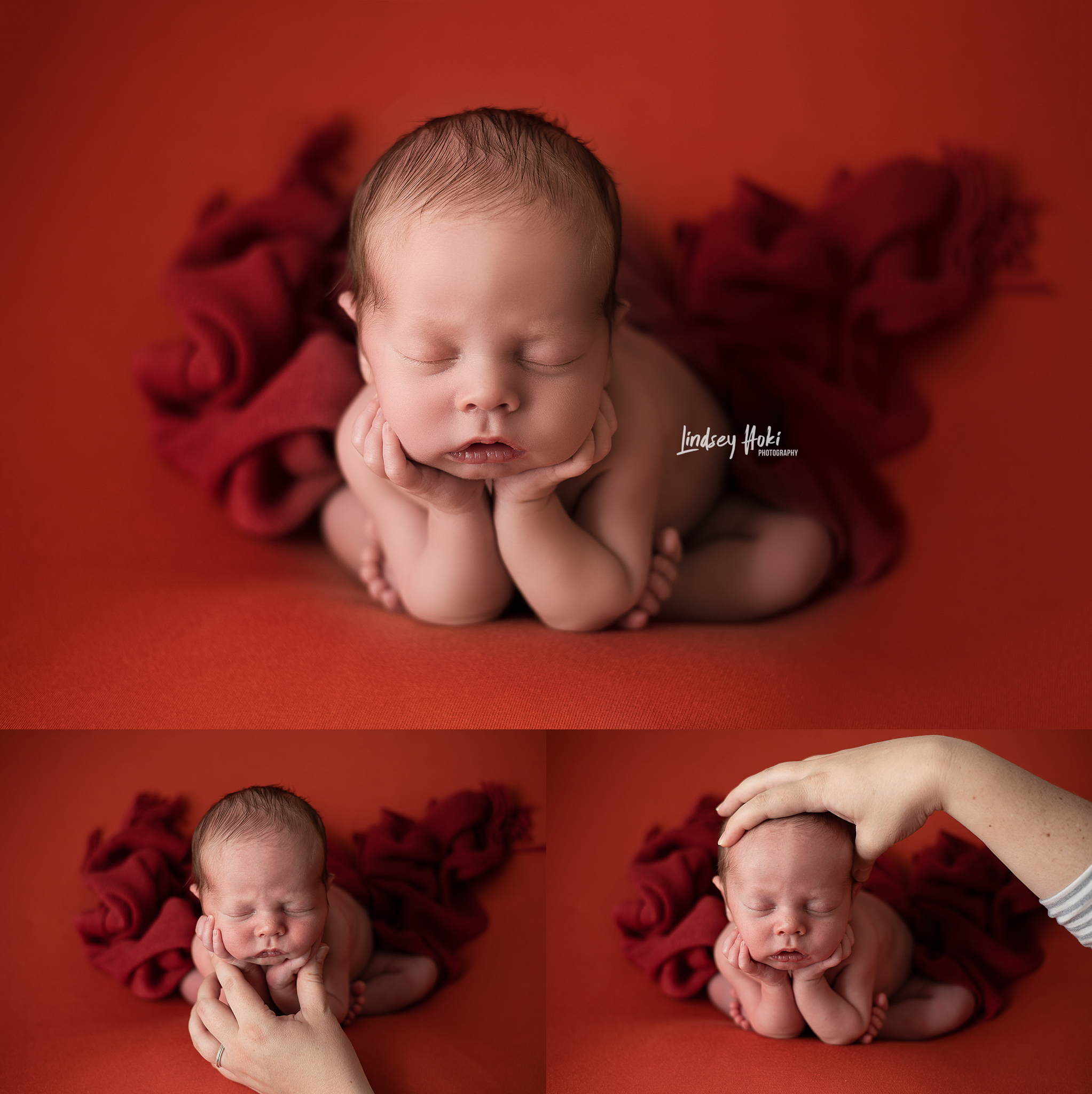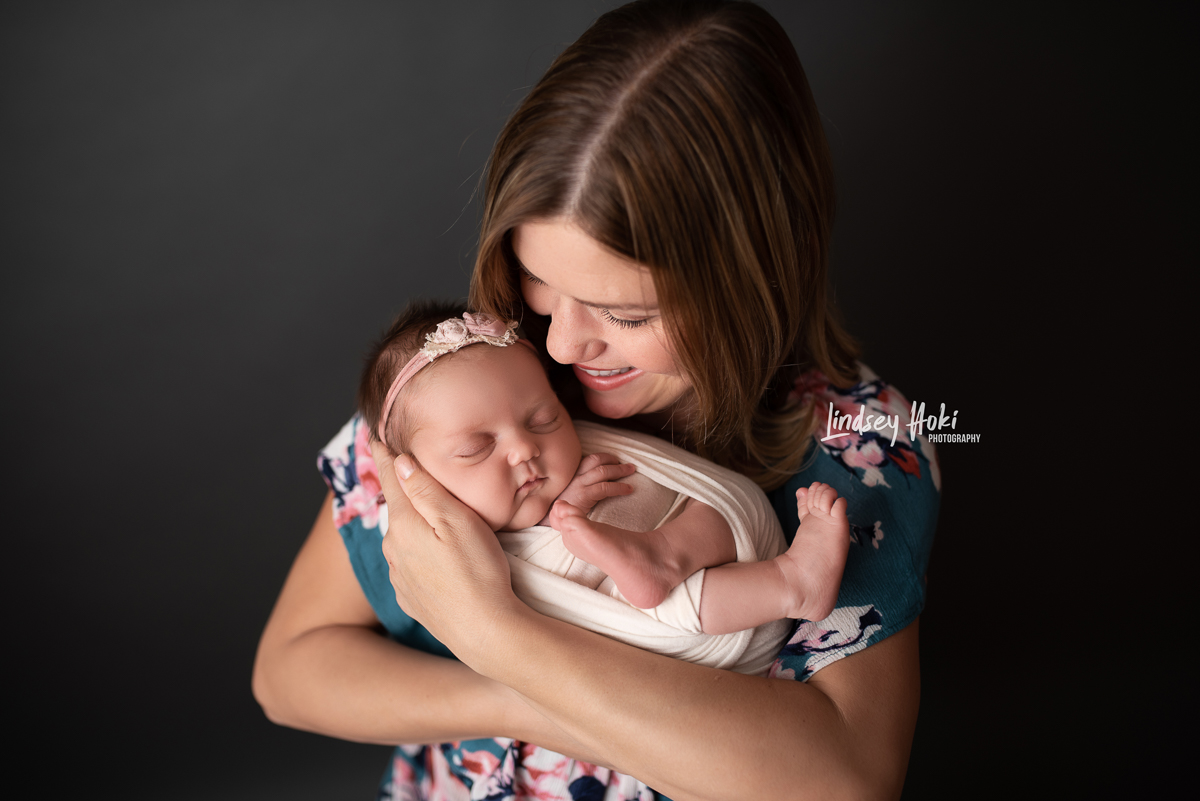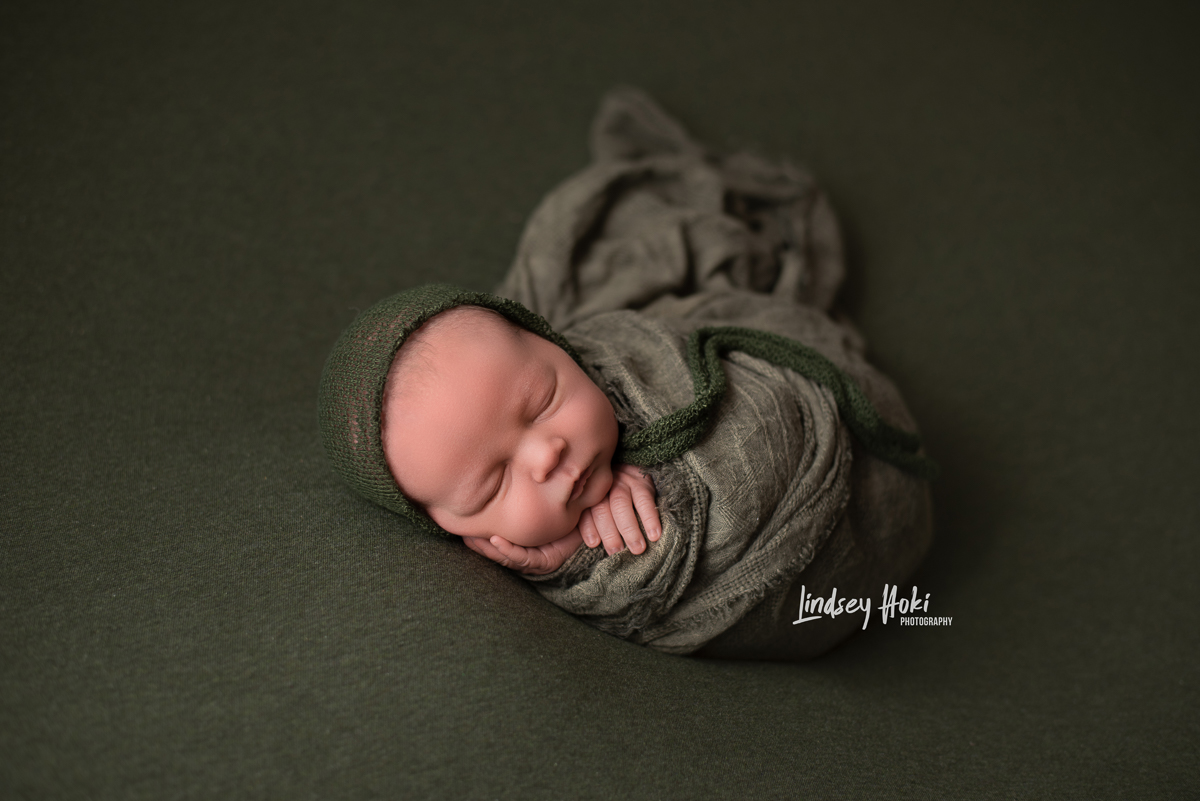
Newborn photographers are responsible for the baby’s health and well-being during the photo session. Photographers should be educated in safe posing techniques to prevent positional asphyxiation. Positional asphyxiation is when the position of the body blocks the airway. Newborn babies are particularly sensitive to the risks of positional asphyxiation as they lack head control and have under-developed airways. Nurse, Jacintha Murphy explains, “This issue is not unique to newborn photography; positional asphyxiation can happen in a car seat, swing, bouncy seat or a baby carrier”.1
Photographers should pay particular attention to the babies positioning during the newborn session. “In newborns, the airway kinks (like a straw) due to the heavy weight of their head, resting their chin on their chest”.1 Any pressure on the soft part under the baby’s chin can restrict airflow as the tongue is pushed up. Even the baby’s head resting on their arms or hands in the wrong areas can cause a restriction of airflow.2 “Airway occlusion in a newborn can happen in all directions, not just backwards or forwards”.1
Any pose has the potential to restrict airflow, therefore it is important to watch for signs of respiratory distress consistently throughout the session. Some signs of respiratory distress in babies include, “breathing increase, colour changes, grunting, wheezing, muscles going in and out more than normal, nostrils flaring, head bobbing up and down as they breathe, pursed lips as they breathe out”.1 Stephanie Robin, a newborn photographer, and physiotherapist, also mentions that the coloring of the face should be watched, particularly around the mouth, as this can indicate that the baby is not getting enough oxygen or the airway is restricted.2

Care should be taken to prevent positional asphyxiation during the session. During complex poses, composite images and head support from an assistant are used to reduce this risk. For example, the “potato-sack pose” should be a composited photo and the baby should have hands-on support at all times.3 Stephanie Robin created a wonderful hand-drawn infographic showing some of the risks associated with the popular “potato-sack pose”: Find it HERE. She warns that some photographers are doing this pose without hands-on support, setting the baby in a well, or using several wrap layers to keep the baby upright. Without the hands-on support, there is a large risk of the baby falling, and/or the baby’s head pressing into their hands and limiting the air supply. Stephanie also mentions that many photographers have been tilting the baby’s head back to prevent positional asphyxiation, although many do not realize there is also the risk of disk herniation as the pressure of the head pushes down on the vertebrae. Babies lack muscular control in the neck and the result can be a shift of the vertebrae forward into the space where the spinal cord runs and pinching of the nerves found there.2
“Froggy pose” also should always be done as a composite. Stephanie remembers a “froggy pose” done several years ago when her assistant was pinching the wrists together and the whole weight of the baby’s head was essentially resting on the shelf that the hands created. This could have caused positional asphyxiation as the hands were now pushing into the soft area under the chin. She recommends giving support from the bony structures instead and supporting the baby from the jawline. It is also important to avoid the soft spots of the baby’s head when providing support.2

Changing the baby’s position often can help to reduce the risk of positional asphyxiation, especially in more restrictive poses. Preventing positional asphyxiation should be the priority, but it is also a good idea to be trained in infant CPR should something go wrong. By using smart posing techniques, watching the baby closely throughout the session, and watching for signs and symptoms of distress we can keep the baby safe and get some beautiful pictures.
Sources
- Murphy, J. (n.d.). Positional asphyxiation PDF. Retrieved from https://www.standinbaby.com/product/positional-asphyxiation/.
- Brandt, A. (2017, July 05). Retrieved July 28, 2019, from https://www.youtube.com/watch?v=qLn5InfFb0U
- Newborn Safety. (n.d.). Retrieved from https://apnpi.com/newborn_safety/.





